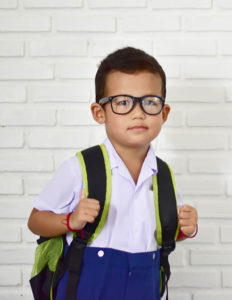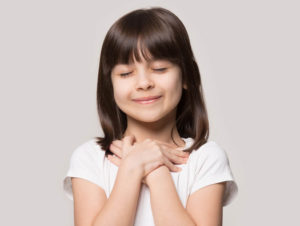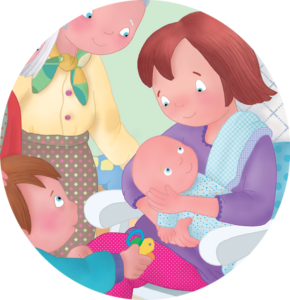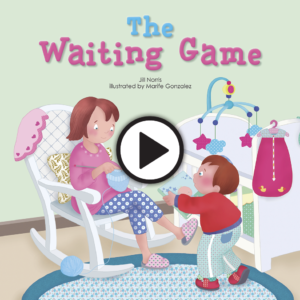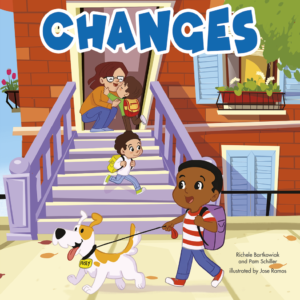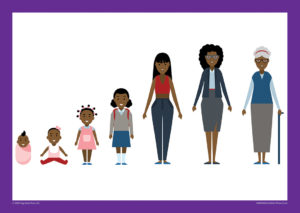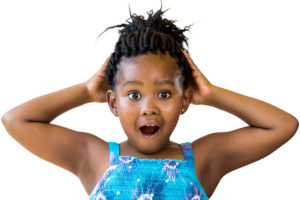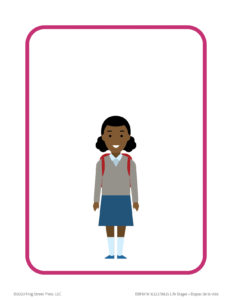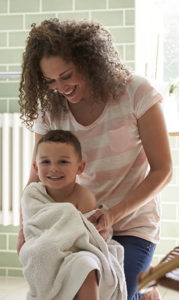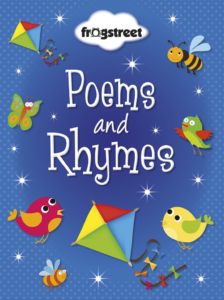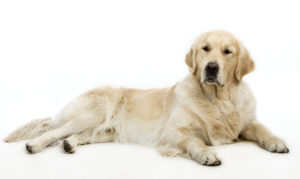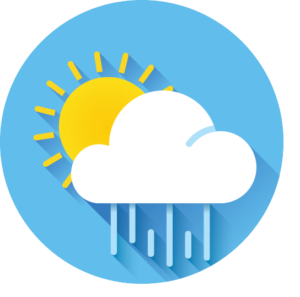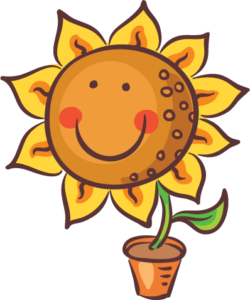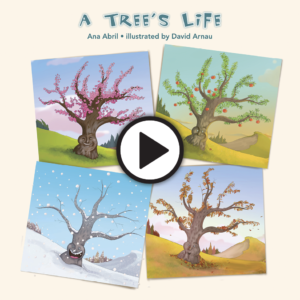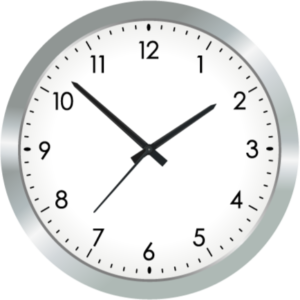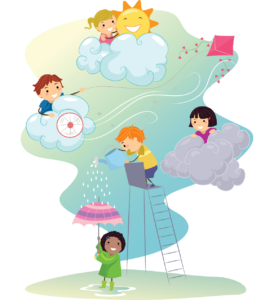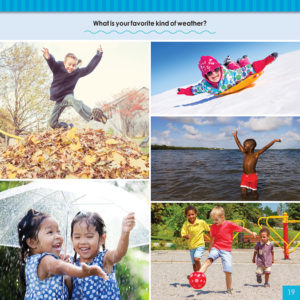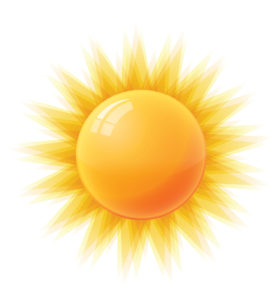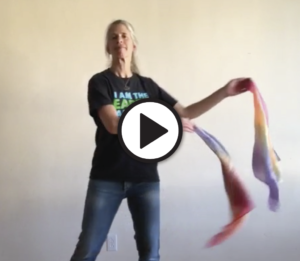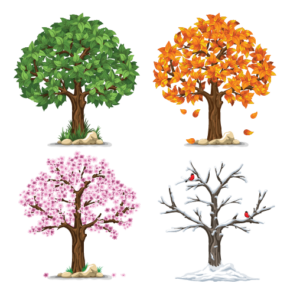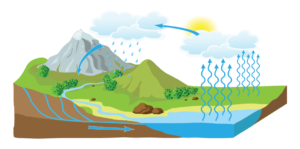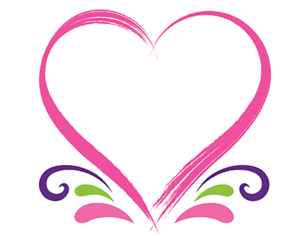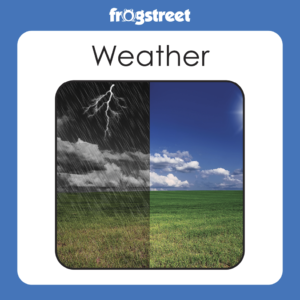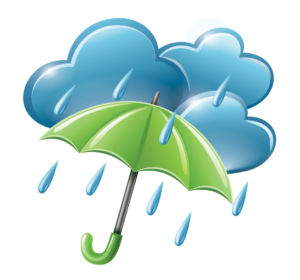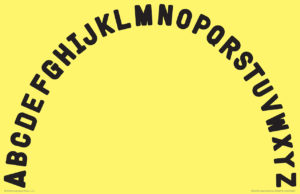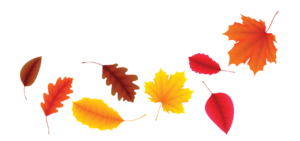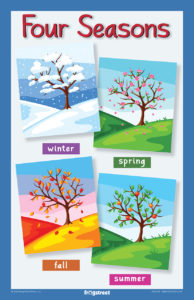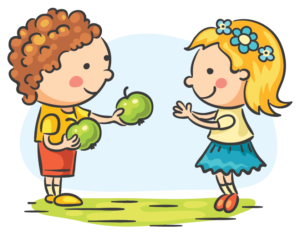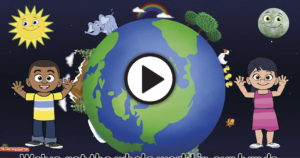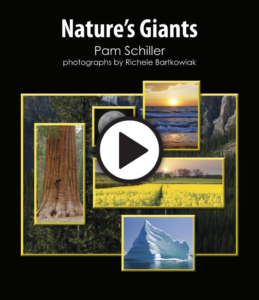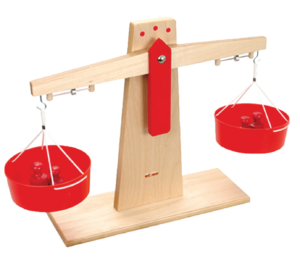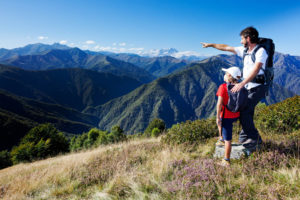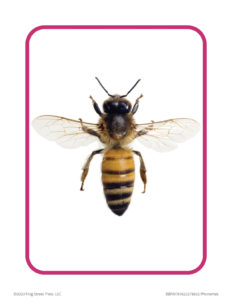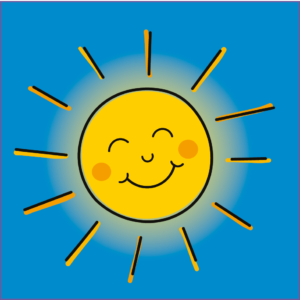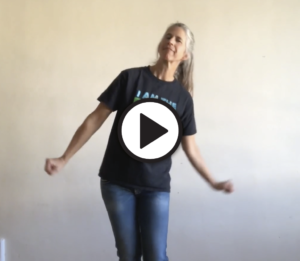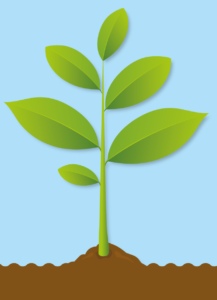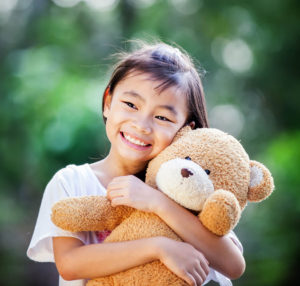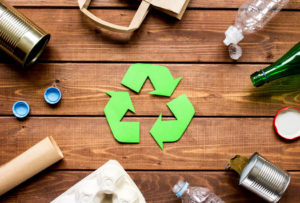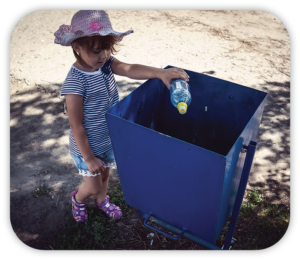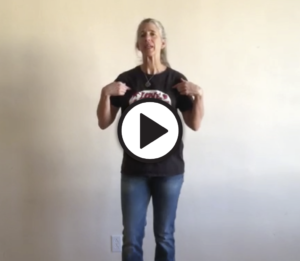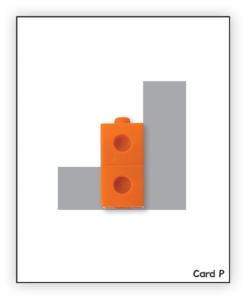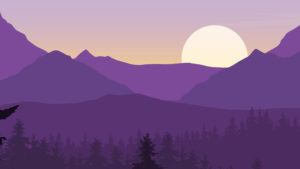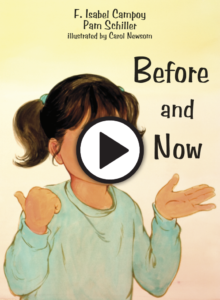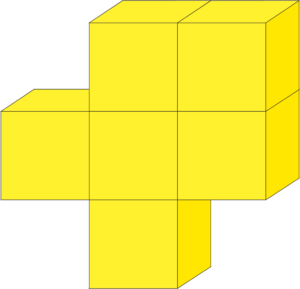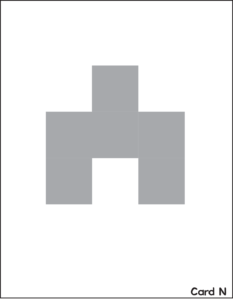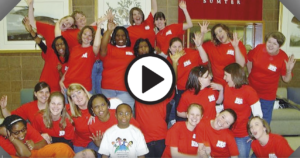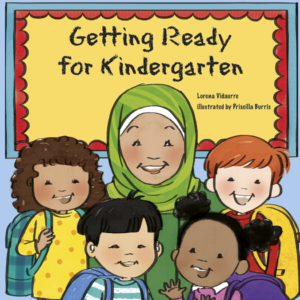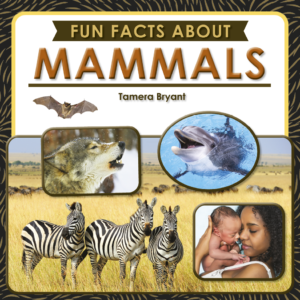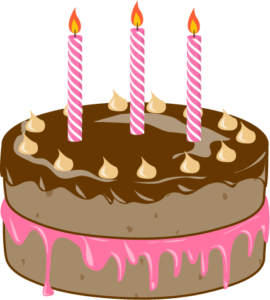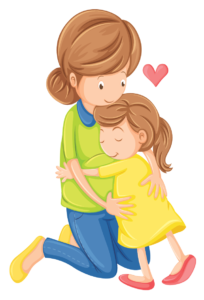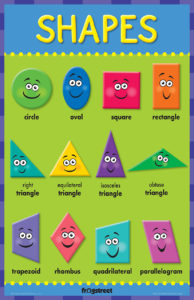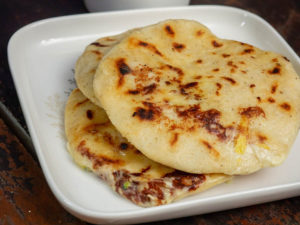Changes
Week 1: In and Around Me
This week, your child will explore the idea of change and its effects. Change can happen over a long period of time or in a moment. Some changes are hardly noticed. Others make a big impact. Changes happen to everyone.
Word of the Week: change
Before You Begin
Watch these videos to better understand the concepts your child will be learning this week. These are not videos you will watch with your child. These are just for you!

Songs to Sing
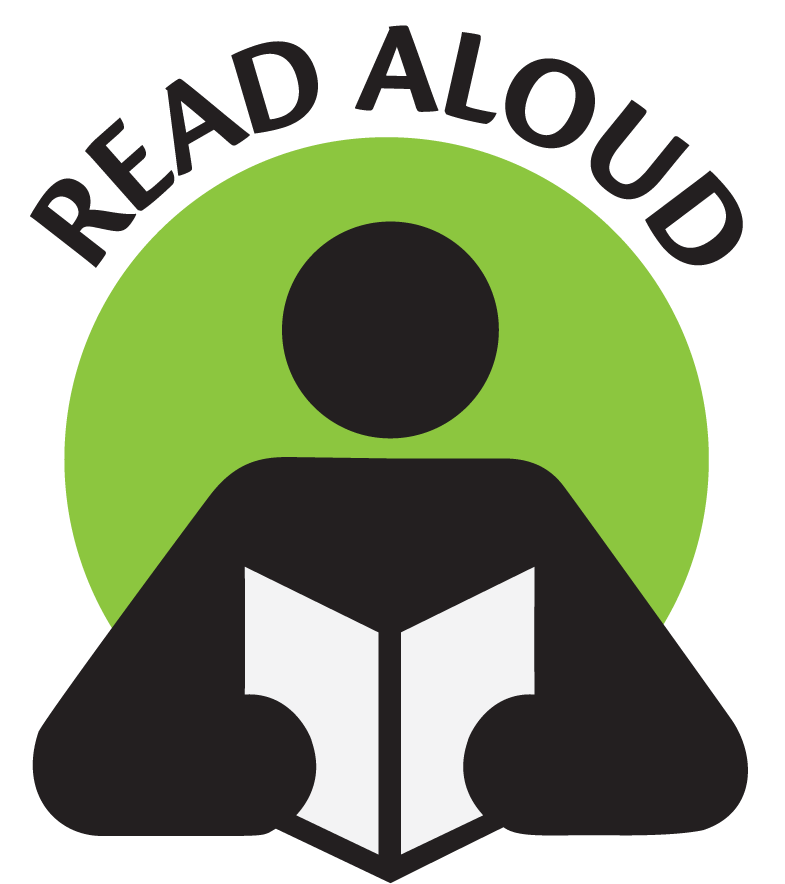
Books to Read
- Changes eBook
- I Can eBook
- Poems and Rhymes eBook
- The Waiting Game eBook
- The Waiting Game Read-Aloud video
Supplies to Gather
- 0-5 dot cards (index cards, sticky dots or markers)
- 12-month calendar
- analog clock or watch
- baby clothing (shirt, bootie, onesie)
- blocks
- cell phone
- child’s clothing including a button shirt
- cleaning pennies: salt, warm vinegar
- color change experiment: muffin tin; red, blue, yellow, and green food coloring; eyedroppers; white coffee filters or paper towels
- minute timer
- nature item: seed pod, shell, pinecone, flower, leaf
- paper
- pennies
- photograph of parent as baby
- photos of child as newborn, infant, toddler, three-year-old
- plastic bag with nine items
- small rubber ball
- writing tools
Daily Message
I change clothes in the
morning.
- Say the sentence. Ask your child to repeat it.
- Say a group of three words: car, do, boo. Have your child repeat the two that rhyme.
- Write the sentence as your child says it.
- Have your child circle and name the letters a, g, and e.
Storytime
The Waiting Game is a book about a family who is waiting for something special to happen. Have your child predict why he thinks the family is waiting. Watch the read-aloud video with your child. Ask: Did you guess right? Together think of some clues the author and the illustrator gave the reader.
Estimating
Show a plastic bag with nine items inside. Ask: How many do you estimate are inside the bag? (Estimating is not counting. It means making a good guess.) Remove five of the items from bag. Count the items with your child. Ask: How many are still in the bag? Five outside, four inside–how many altogether? Have your child arrange the 9 items as they are on the card.
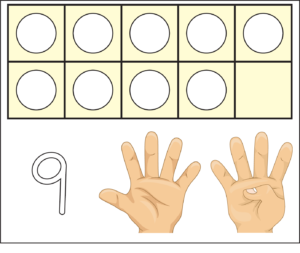
Nature Catch
Have your child play a game of catch with you using a small rubber ball. After one game, replace the ball with a seed pod, shell, pinecone, flower or leaf. Remind your child that you have changed the way you play catch by replacing one thing for another. Ask: Does the shape, size, weight, or texture make a difference?

Just a Minute
Set up a simple task, such as putting 10 pennies in a straight line or stacking four blocks. See how many times your child can complete the task in one minute. Use a minute timer. Ask: Were you surprised how many times you did it? Why? How would you describe the length of a minute?

What Happens?
Talk with your child about why we practice calming strategies every day. Have your child choose one of the calming strategies she finds helpful. Ask: What changes do you notice in and around you when you do the strategy?

Daily Message
How have you changed in size?
- Say the sentence. Ask your child to repeat it.
- Say a group of three words: size, rise, bed. Have your child repeat the two that rhyme.
- Write the sentence as your child says it. Have your child answer the question.
- Have your child circle and name the letters a, e, g and z.
Rhyming Words
Remind your child that the book The Waiting Game is full of rhyming words. Rhyming words have the same middle and ending sounds. Read the book asking your child to repeat the rhyming words as you go along. Then say: Tell me another word that rhymes with (the rhyming word pair).
Storytime
Explain that today’s story is about a boy who is worried and sad about change that is coming his way. Have your child listen to find out what this change is and to notice other types of changes in the story. Read Changes. Help your child make a list of changes he has experienced, such as outgrowing clothes, seeing weather changes, getting a haircut, or moving.
Long or Short Wait?
Long and short can be used to describe the amount of time an activity takes from start to finish. Draw two columns on a sheet of paper. Label the columns: “Long Wait” and “Short Wait.” Have your child think of activities that require a long wait. Repeat for short wait. Write your child’s ideas on the chart. Click image to enlarge.
Change the Number
Place the 0-5 dot cards in a stack face down. Tell your child to take the top card and make a set of pennies that matches the number of dots. Have your child turn over another card. Ask: Will you add or remove pennies to make your set match the dots on the new card? How many pennies will you add? Remove? Continue until all cards are played.

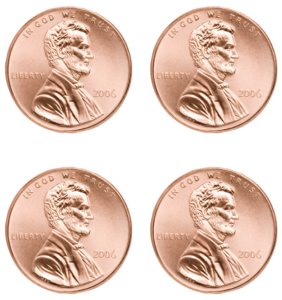
Life Stages
Just as animals change as they grow, people also go through stages. Introduce your child to the names of human life stages: newborn, toddler, young child, older child, teenager, adult, senior. Say: A new baby is called a newborn. This is the first stage of life for every person. Click image to talk about life stages.
Rearrange a Space
Have your child help rearrange his room or a play area in the house. Talk about changes that could be made and try out a few. After a day or two, discuss the changes with your child. Ask: Do you like the new arrangement? Why or why not?

Change
Teach your child a rhyme about children who enter a room and find that the toys that they remember have been changed. Ask: Have you ever noticed a change when you entered a room? (furniture moved, new toy or lamp, new paint, broken piece of equipment) How did you feel about the change? Were you surprised? Click image for rhyme.
Daily Message
What do you wait to do?
- Say the sentence. Ask your child to repeat it.
- Say a group of three words: door, late, wait. Have your child repeat the two that rhyme.
- Write the sentence as your child says it. Have your child answer the question.
- Have your child circle and name the letters a, d, o.
Writing Together
Talk about the jobs the family does in The Waiting Game. (Picture walk through the book if you have forgotten.) Ask: What would our family do to prepare for a new baby? Write your ideas on paper. Have your child track the words with a pencil or marker as you “read” the ideas.

Tiny Things
Talk about how when your child was a baby, he had tiny toes and a tiny nose. If available, show your child a baby shirt or bootie. Hold the clothing up to your child’s chest or foot. This is a great way to show how much a child has grown from birth to age 5. Share the poem “Tiny Things” with your child. Click image for poem.
Storytime
Read Changes. After reading, talk about patience. Explain that patience is being able to wait without becoming annoyed or upset. Ask your child which changes in the story took a while to happen. Have your child share slow changes that required patience. Click image to enlarge word.
Button Challenge
Challenge your child to fasten each button on one of his shirts. Use a stopwatch on a cell phone to see how long it takes. Ask: How many buttons did you fasten? Repeat the activity several times over a period of days. Note how the amount of time it takes becomes shorter.
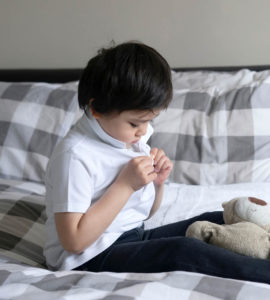
Baby Photos
Find some photos of your child when she was a newborn, infant, toddler, and three-year-old. Invite your child to order the photos by age. Have your child compare each photo to a current photo. Ask: How has your body changed? What has stayed the same?
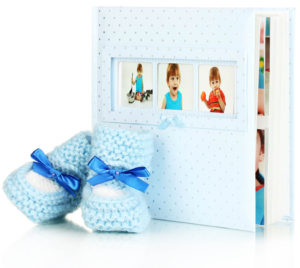
What’s It Mean?
If you know the meaning of your child’s name, tell what it means. If you don’t know, look it up on the internet and share what you find. Explain to your child, why you chose that name.

Funny Faces
Put both hands behind your back and then hold them out in front of you. Have your child pick a hand. When your child touches a hand, make a funny face with a noise (laugh, giggle, snort, growl, sigh). Have your child copy the face. Repeat and make different faces. Change roles and let your child choose the face.

Daily Message
How does the weather change?
- Say the sentence. Ask your child to repeat it.
- Say a group of three words: how, girl, cow. Have your child repeat the two that rhyme.
- Write the sentence as your child says it. Have your child answer the question.
- Have your child circle and name the letters a, c, g, and o.
Read and Write
Read the title of the book I Can. Have your child “read” the book with you. After reading, have your child make an “I Can” book using a 4-page blank booklet of paper. Invite your child to draw pictures and write showing what she has learned to do this year. Read the finished book together.
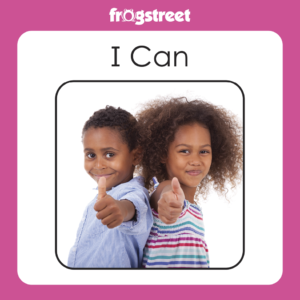
Storytime
Before watching The Waiting Game read-aloud video, remind your child that a new baby is called a newborn and that this is the first stage of life for people. After watching the video, decide together on the stages of life for the other characters: boy who tells the story (young child); mother and father (adult); grandparents (seniors).
Watch the Clock
Have your child look at clock or watch with hands. Point out the second, minute, and hour hands. Talk about how each hand goes at a different speed. Tell your child that one minute has passed when the second hand (the fastest and skinniest) makes one circle around the clock. Have your child name the numerals 1-12. Each numeral tells the name of the hour.
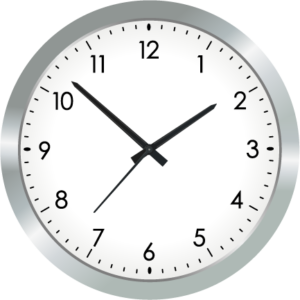
New or Old
Help your child sort through her closet or dresser drawers to make two piles for clothes (new and old). As she sorts, challenge her to describe the attributes of the clothing in each pile. Ask: How can you tell the __________ is old? new? Encourage your child to try on the old clothing to see if it still fits. If not, consider donating it.
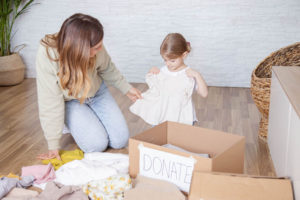
Dirty to Shiny
Collect a handful of pennies. Have your child separate the dirty pennies from the shiny ones. Make a cleaning solution by mixing one teaspoon of salt and 1/4 cup of warm vinegar. Stir until the salt is dissolved. Add the pennies. Wait five minutes. Remove and dry the pennies. Ask: How did the pennies change? How do they look different?

Watch It Change
Take this opportunity to observe a change in nature. Look in your yard, a neighborhood park, or at the entrance to school. Find a flower bud, sprouting weed, or an anthill. Look at it closely and talk about possible changes. You might even take a photo. Check often to see if anything changes.
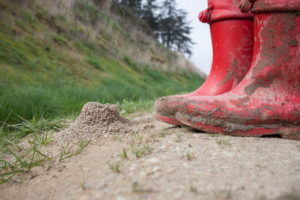
Positive or Negative
Ask: Do you notice any changes inside of you or around you when you do your jobs to help keep our family safe? The choices your child makes can have a positive (helpful) effect or a negative (hurtful) effect. Have your child tell you how the commitment she is choosing today will be a positive (helpful) one.
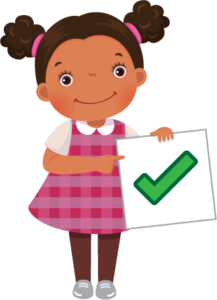
Daily Message
What changes have happened to you?
- Say the sentence. Ask your child to repeat it.
- Say a group of three words: cat, you, zoo. Have your child repeat the two that rhyme.
- Write the sentence as your child says it. Have your child answer the question.
- Have your child circle and name the letters a, c, e, g, o, and t.
Easy to Confuse
Focus Letters: e, c, o,
a, g, N, Z
Look closely at pairs of letters that are easy to confuse. For example, the lowercase c and the lowercase o are very similar. Looking closely at pairs of letters. Notice how they are alike and different. Name each letter. Click image to get started!
Storytime
Talk about weather changes. Ask: What is your favorite kind of weather? Read the poem “Whether the Weather” (Poems and Rhymes, page 27). Point out that two words in the title (whether and weather) sound alike but have different meanings. Because the two words sound alike, it’s fun to read and listen to the poem.
The Calendar
Show your child a 12-month calendar. Say: A calendar measures the number of days and months in a year. Explain that each square represents one day. Say the name of each month and the seven days of the week. Find the month and date of your child’s birthday. Notice how many days are in each month.

What Changed?
Make a row of four different colored pencils or markers. Invite your child to name each color she sees and then close her eyes. When her eyes are closed, replace one of the markers with one of a different color. Tell your child to open her eyes. Ask: What changed? Are any colors different? Which one? Repeat the game.
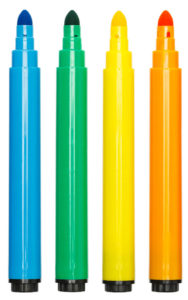
Color Change
Place a small amount of water in four muffin tin sections. Add drops of red, blue, yellow, or green food coloring to the water in each cup. Have your child use eyedroppers to drip colored water onto white coffee filters (or paper towels) to create a colorful design. Ask: How did your coffee filter change? What happens when two colors mix?
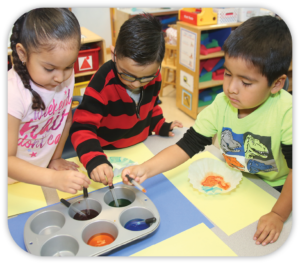
Changes
Week 2: Earth Changes
This week you and your child will explore changes that include weather, day and night, and seasons.
Word of the Week: weather
Before You Begin
Watch these videos to better understand the concepts your child will be learning this week. These are not videos you will watch with your child. These are just for you!

Books to Read
- A Tree’s Life eBook
- A Tree’s Life Read-Aloud video
- Poems and Rhymes eBook
- Weather eBook
- What Is Weather? eBook
Supplies to Gather
- cloud in a jar: mason jar, shaving cream, eyedropper, colored water
- day and night experiment: small ball, flashlight, tape
- half-sheet of posterboard or cardboard
- journal
- miniature gardens: planting container, rocks, potting soil, seeds
- nature item: seed pod, shell, pinecone, flower, leaf
- paper
- scarves or soft fabric (2)
- shaving cream
- stopwatch or timer on cell phone
- sunbeam pattern: small plate, paper
- tissue
- tray or waterproof surface
- water cycle experiment: plastic wrap, ice cubes, salt, large clear bowl, small clear bowl
- winter and summer clothing
- writing tools
Daily Message
What is the weather today?
Today is __________ .
- Write the daily message before the lesson.
- Have your child “read” the words with you as you track them with your hand.
- Have your child tell today’s weather. Write your child’s words in the blank.
- Have your child use a marker to circle any word. Ask: How are a word and a letter different?
My Chance to Dance
“My Chance to Dance” is story song about a little seed. Listen to the song and ask: What do you think the little seed means when it says “I just might get my chance to dance”? Do you have dreams like the little seed? What would you like to have a chance to do? Click image for lyrics.
Storytime
The story you and your child will listen to today is told by the main character, a tree. When a character, like a tree, acts like a human (person) we call it personification. Watch the A Tree’s Life read-aloud video. Ask: How does the tree act like a human? How did the illustrator of the book add to the personification?
Sunbeam Pattern
Have your child trace around a small plate on paper and color the circle yellow. Use wide red, orange and yellow markers to make sunbeams around the yellow circle. Help your child start at the top and go around the circle clockwise (red, orange, yellow) to make a pattern. Have your child read the pattern of colors in the sun’s rays.
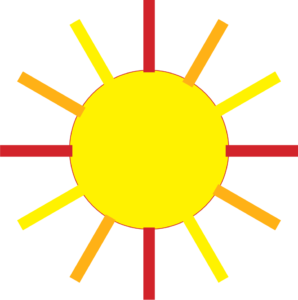
Weather Forecast
Watch a weather forecast on TV with your child. Then play-act your own weather forecast. Have your child go to the window or step outside to check the weather conditions. Ask: What do you see in the sky? What will you need to wear if you play outside? Is it hot? warm? cold? rainy? Have your child pretend to be the weather person and give the forecast.
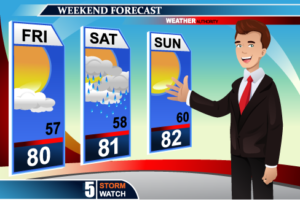
Day and Night
Ask: What do you see when it is night? What do you see when it is day? Write your child’s answers on a two-column chart labeled “Night” and “Day.” On another day, talk about the things your child hears at night and during the day or does during the night and the day. Add these ideas to the chart.

When You Feel Stormy
Say: Sometimes when we are upset, our tummies start to roll, and our feelings are out of control like black clouds in a thunderstorm. What breathing strategy would you use if your insides feel “stormy”? Practice the strategy your child suggests or work together to invent a new strategy to help feel calm and “sunny.”
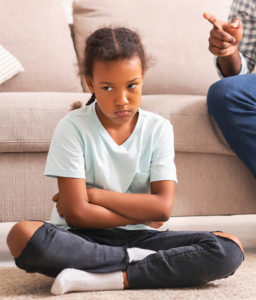
Daily Message
What is the weather today?
Today is __________ .
- Write the daily message before the lesson.
- Have your child “read” the words with you as you track them with your hand.
- Have your child tell today’s weather. Write your child’s words in the blank.
- Have your child use a marker to circle a punctuation mark. Ask: What mark did you circle?
Blending Sounds
Today your child will practice blending sounds to make words. You will say the beginning sound and the rest of the word. Your child will blend them together. For example, you will say: My word begins with /d/ and ends with /oor/. Put them together and the word is __________ . (door) Click image for chant and words.
Storytime
Read What Is Weather? Have your child listen carefully to find out true facts about weather. On page 2, pause and count all of the words that describe weather. Make connections between the photos in the book and your child’s experiences. For example, you might say: When we walked in the rain, you splashed in a puddle.
Calendar Pattern
Show the “red, orange, yellow” sunbeam pattern your child made yesterday. Have your child read the pattern (say the colors). Point out that the pattern goes around the yellow circle. Ask: What would happen if you used the same pattern to fill in the squares on a calendar? Click image to show your child a calendar grid with a pattern of colored dots.
The Warming Sun
Refer to the photos on page 19 of What Is Weather? Ask: Which photos show children playing in warm weather? How do you know? Explain that when the earth is tilted closer to the sun, we see the sun for more hours in the day and the weather is warmer. Remind your child to wear sunscreen and drink plenty of water when playing outdoors on a sunny day.
Shaving Cream Fun
Spray a handful of shaving cream on a tray or waterproof surface. Invite your child to make cloud designs with the shaving cream. When the shaving cream is flattened out on the surface, suggest your child use her finger to trace the outlines of different shapes (circles, squares, triangles) or form letters and numerals.
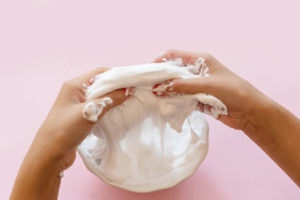
Be the Wind
Show how to tilt your head back, place a tissue above your face, and give a soft blow to create a gentle breeze to life the “cloud” (tissue). Give your child a tissue to blow. Start with a gentle breeze and then try using a gale force. Work together to blow the tissue back and forth between the two of you. Ask: What other things can you blow?
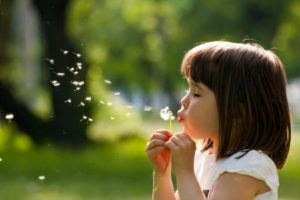
Daily Message
What is the weather today?
Today is __________ .
- Write the daily message before the lesson.
- Have your child “read” the words with you as you track them with your hand.
- Have your child tell today’s weather. Write your child’s words in the blank.
- Have your child use a marker to circle a letter. Ask: Which letter did you circle? Is there more than one __________ in the sentence?
Writing Together
Word webs help writers organize ideas and think of describing words. Create a word web about weather. Write the word weather in the center of a paper. Draw a circle around it. Have your child think of weather words. Write the words around the circle. Draw a line from each word to the circle. When you have finished, “read” the words together.

Sing a Summer Song
Give your child two squares of soft fabric or two scarves. Have her hold one scarf in each hand and gently move it with the beat of the music. Watch Charity Kahn’s music video of “Sing a Summer Song.” Have your child sing and dance along. Ask: Which is your favorite move with the scarves?
Storytime
Before reading today, talk with your child about water. Ask: What do you know about water? Your child may remember how water can change from a solid to a liquid or may simply say she drinks water or uses it to wash. Explain that today you will find out more about water and weather. Read pages 8-13 in What Is Weather?
Four Seasons Pattern
Every year seasons change in a predictable pattern. Each season has characteristics that are different and make it special. Review the four seasons of the year: winter, spring, summer, and fall. Remind your child about how the tree in A Tree’s Life changes each season. Click image to get started!
Day-to-Night Pattern
Have your child hold a small ball as you shine a flashlight beam on it. Put a piece of tape on the ball. Have your child turn (rotate) the ball so that the tape moves into and out of the light. Say: On the part of the earth facing the sunlight it is day. On the other side it is night. The Earth’s constant turning makes a “day-to-night” pattern.
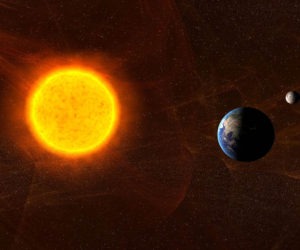
Water Cycle
In the book What Is Weather? you have read about the water cycle. Do a water cycle demonstration for your child. Prepare for the experiment by boiling a pot of water. Have available plastic wrap, ice cubes, salt, large clear bowl and small clear bowl (custard cup size). Click image for directions.
Dress for the Season
Talk with your child about the seasons. Ask: How does weather change during different seasons where we live? How does what you wear change because of the weather? Point out winter and summer clothes in your child’s closet.
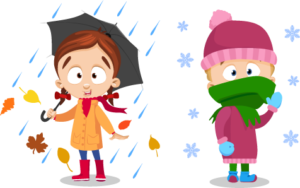
Daily Message
What is the weather today?
Today is __________ .
- Write the daily message before the lesson.
- Have your child “read” the words with you as you track them with your hand.
- Have your child tell today’s weather. Write your child’s words in the blank.
- Have your child use a marker to circle the period. Ask: What does the period mean?
My Journal
Read Weather. Invite your child to “read” with you. When you read the last page, share an activity you do on a rainy day, such as “I like to read a book on a rainy day.” Have your child draw a rainy-day activity on the first blank page of her journal. Suggest your child label the activity. Help as needed.
Storytime
Watch the A Tree’s Life read-aloud video. Have your child tell how the tree changes from season to season. Learning to retell a story in your own words is an important step in understanding what is read. Ask: If you were a tree, which season would be your favorite?
Compare Patterns
Show your child the four seasons pattern that she created yesterday on the strip of paper. Have her explain the pattern to you. Challenge her to make a new pattern representing day (yellow) and night (black). Ask: What will the pattern look like? How many colors will it have? Click image to get started!
Wind
Have your child help you demonstrate the three types of wind described on pages 14-15 of What Is Weather? Move a half sheet of poster board or cardboard up and down to create each type of wind. Fan the poster board gently and steadily to create a breeze. Fan it rapidly and many times to create a gale. Move it rapidly (but only once) to create a gust.
Shadow Tag
On a sunny day, invite your child to play a game of tag by trying to step on your shadow. Take turns being chaser and runner. If you need a break, find a shady place to rest where there are no shadows. As you rest, lie down and look for shapes in the clouds. Play “I Spy.” For example, say: I spy a cloud that looks like a boat. Can you see it?
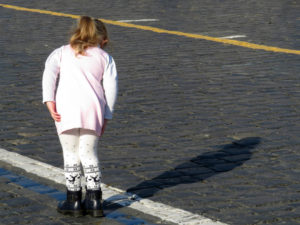
Miniature Gardens
Growing a garden is a great way to connect with the earth. If you don’t have space to plant a garden in a yard, you can create a miniature garden. Punch holes in the bottom of a container and add a layer of rocks for drainage. Have your child add potting soil and seeds. Spray lightly with water each day. Watch the magic happen!
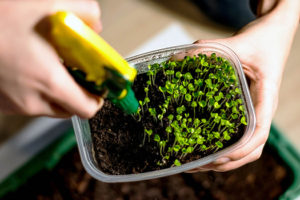
When You Were Born
Children love to hear stories about when they were babies. Talk to your child about the season in which he or she was born. Tell about what the weather was like on that day. Was it sunny and warm or rainy, cloudy, and cold?

Daily Message
What is the weather today?
Today is __________ .
- Write the daily message before the lesson.
- Have your child “read” the words with you as you track them with your hand.
- Have your child tell today’s weather. Write your child’s words in the blank.
- Have your child use a marker to circle any word. Ask: What word did you circle?
It’s Fall Again
There are four seasons in a year—fall, winter, spring, and summer. “It’s Fall Again” is a song about falling leaves. Each time the verse is repeated another singer joins the song. Begin by tapping or clapping the beat. Reach up and pretend to catch a leaf and join the song. Click image for lyrics.
Storytime
Take a picture walk through A Tree’s Life. Say: We know that this is a make-believe story because trees cannot talk. Are there any parts of the book that are true? This book does give facts about the four seasons. Have your child name the seasons. Click image to see a tree in different seasons.
Code Patterns
Teach your child how to use alphabet letters to label a two-color pattern like the day-night pattern you created yesterday. Label each yellow dot with A and each black dot with B. Point out that the pattern has two different letter names, just as it has two different colors. We call it an AB pattern. “Read” the pattern using color words and then alphabet letters.

In One Minute
Have your child choose a pattern core. Ask: How many times can you draw the pattern core in one minute? Use a stopwatch to time one minute. Have your child use colored markers to draw the pattern core over and over. Help your child “read” the pattern aloud and count the number of cores.
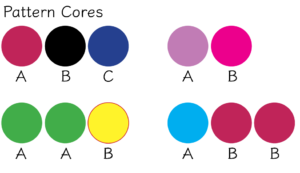
Cloud in a Jar
Fill a mason jar ¾ full of water. Fill the rest of the jar with shaving cream. It should extend about 1 ½” above the jar rim. This is the “cloud.” Have your child use an eyedropper to drop colored water on top of the cloud and watch it drip through like colored rain to the water below. Note: Supervise your child during this experiment.
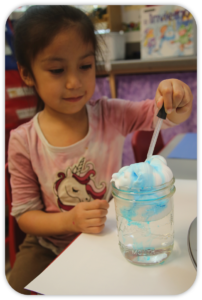
Changes
Week 3: Nurturing Earth
This week your child will think about the beauty and resources of the earth. Your child will discover ways to protect animals, plants, and all the natural resources the earth provides us.
Word of the Week: conservation
Before You Begin
Watch these videos to better understand the concepts your child will be learning this week. These are not videos you will watch with your child. These are just for you!

Books to Read
- Nature’s Giants eBook
- Nature’s Giants Video Read-Aloud
- Poems and Rhymes eBook
Supplies to Gather
- blocks
- box
- celery experiment: stalk of celery, clear jar of water, blue food coloring
- pincer pick-up: clothespin or tweezers, paper cup
- glue, scissors
- napkins
- paper
- paper squares (stick-on notes)
- pennies (20) or toothpicks
- plastic lid
- plate
- recycled cans or plastic water bottles
- snack crackers or cereal
- teddy bear
- writing tools
Daily Message
What do you see in nature?
- Say the sentence. Ask your child to repeat it.
- Say the word “see” slowly pausing between the two sounds (s-ee). Have your child blend the sounds to say the word.
- Write the sentence as your child says it.
- Have your child answer the question. Write the answer.
The Whole World
Watch the music video “We’ve Got the Whole World in Our Hands.” Ask: What does the song mean when it says that we’ve got the world in our hands? Help your child express the idea that each of us has responsibilities to each other and to the earth. It is important that everyone realizes that they can make a difference.
Storytime
Ask: When you think about giants, what do you think of? Today’s read-aloud is all about giants in nature. Watch the Nature’s Giants read-aloud video. After the video, talk about the giants named in the book.
Boat for Nine
Have your child pretend a paper square or stick-on note is a boat that must seat nine passengers. Have your child count out nine pennies for “seats”. Discuss why one row of nine seats will not fit (the “boat” is not big enough). Challenge your child to figure out how to arrange “seats” into three equal rows to fit the square shape.
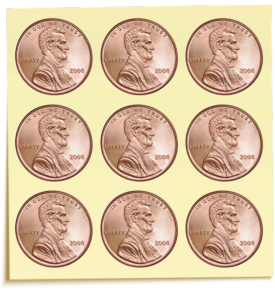
ABB and ABC Patterns
Last week, you and your child began to code (name) patterns using alphabet letters. Remind your child that the pattern core repeats over and over. For example, in the pattern code ABABAB the pattern core is AB. This code names a red-blue, red-blue pattern and a clap-snap, clap-snap pattern. Click image to practice more patterns.
Sharing Snacks
When it’s snack time, help your child see that a large set can be grouped into several smaller “fair share” sets. Arrange eight small snack crackers or cookies on a plate. Have your child divide the crackers into two equal sets. Remind your child that the two sets should each have the same number. Try dividing the crackers into four equal sets.
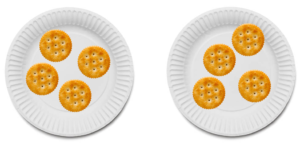
Daily Message
Polar bears are the largest bears and live on ice.
- Say the sentence. Ask your child to repeat it.
- Say the word “ice” slowly pausing between the two sounds (i-ce). Have your child blend the sounds to say the word.
- Write the sentence as your child says it.
- Have your child circle a word. Ask: How is a word different from a letter?
Sounds in Words
Practice separating a word into its sounds. For example, point to a photo of a bee. Say b-ee with a clear pause between the two sounds. Have your child repeat the two sounds. Place a small object (paper clip, block, cotton ball) on the table to represent each sound. Touch each object as you say each sound: b-ee. Click image to get started.
Storytime
This week, you and your child will be reading and talking about poems. Poems use a few words to paint a picture in a reader’s mind. Many poems also make you think about an important question. “Do You Suppose?” looks at the things we do and enjoy from the earth’s point of view. Ask: When have you felt like the sun was giving you a hug? Click image for the poem.
Rearrange Eight
Have your child arrange 8 paper squares or stick-on notes in a single row. Ask: How many squares altogether? Challenge her to rearrange the squares to make a rectangle with two rows. Ask: How many squares are in each row? Have her reconfigure the squares into a rectangle with four rows. Ask: How many squares are in each row? Click image to see arrangements.
Recycling Box
Help your child find a box that can hold up to 20 cans or plastic bottles. Tell your child the two of you will use the box for collecting cans for recycling. Decorate the box with markers, glue, scissors and paper. Your goal this week will be 20 cans. Show your child 20 pennies or toothpicks so she can visualize how many 20 is. Have her count the pennies.

Earth’s Beauty
Talk about earth’s beauty with your child. Call attention to sunsets, the smell of rain, the stages of the moon, spring flowers, fall leaves, and insects at work. Make a list of your child’s favorite examples. If your child does not connect with the earth and learn to love it, she may not see any reason to conserve and protect its resources.

Calming Strategies
Review the five main calming strategies with your child: Drain, Balloon, Bunny Breathing, Pretzel, and S.T.A.R. Remind your child to breathe in through her nose and exhale slowly through her mouth as she practices the strategies.
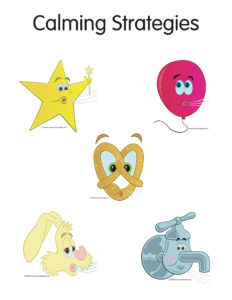
Daily Message
Some trash can be recycled. What could you recycle?
- Say the sentences. Ask your child to repeat them.
- Say the word “be” slowly pausing between the two sounds (b-e). Have your child blend the sounds to say the word.
- Write the sentence as your child says it.
- Have your child answer the question. Write the answer.
Writing Together
Explain that recycle means to make something new from something that has been used before. Share some ways that you recycle. For example, you might turn a cardboard shipping box into a playhouse, or you might wash a soup can and use it as a pencil holder. Ask: How can you recycle something you have used? Write your child’s ideas.
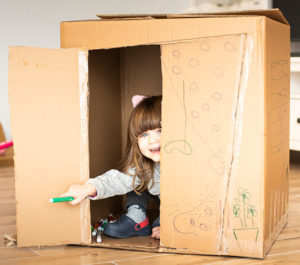
A Tree in Your Heart
Watch the music video “Keep a Green Tree in Your Heart.” Charity Kahn tells the listener to listen to the story of the singing bird. The singing bird, in turn, tells a story about a tree. (It was once a tiny seed, it drank the rain, and grew up strong.) Dance along with Charity as you watch.
Storytime
Share the poem “Tiny Seed” with your child. After reading it once, read it again and have your child act it out. (Your child can tuck into a ball as you begin and slowly unfold until standing tall with arms stretched overhead.) Remind your child that taking care of growing things is part of conservation. Click image for poem.
Sharing Six
Have your child count out six crackers. Invite your child to figure out how to share the six crackers evenly between the two of you. Have her put an equal number of crackers on two napkins. Ask: How many crackers would we each get? What if another person came? How could you share six crackers evenly between three people? Add a napkin and try out the idea.
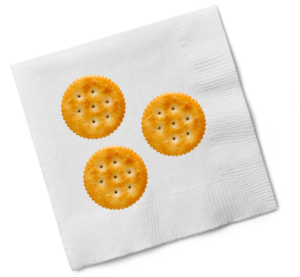
Create a Pattern
Today your child will draw a pattern with a pattern core that you have talked about this week. Demonstrate using a strip of paper and markers to make the pattern. Your child will choose a pattern core and draw colored dots in that pattern. “Read” the pattern after you make it. Click image to get started!
Celery Experiment
Demonstrate how water can carry pollution. It is important to protect the earth’s water and soil so that we protect our food supply. Click image to see instructions for setting up an experiment. Have available a stalk of celery (with leaves), clear jar of water and blue food coloring.
Do Your Part
Littering is throwing trash in a place it does not belong. It is one kind of pollution. Ask: Where have you seen trash in a place that it does not belong? Remind your child to throw wrappers and empty bottles into trash and recycle cans. This can be at home, at the park, or at the mall. Helping to control litter is an important part of conservation.

Daily Message
Remember to turn off the
lights!
- Say the sentence. Ask your child to repeat it.
- Say the word “to” slowly pausing between the two sounds (t-o). Have your child blend the sounds to say the word.
- Write the sentence as your child says it.
- Have your child circle the end punctuation. Ask: What does this mark mean?
A Poster
We have been talking this week about how we can take care of the earth. Say: Sometimes people make posters to share information. Let’s make a poster for one of our ideas. Have your child draw a picture of one way to care for the earth. Add a few words. Display the poster where family members can see it.

Storytime
Watch the Nature’s Giants read-aloud video. Have your child remember some of animals in the book. Point out that animals are part of the beauty of the earth. They need us to protect them and take care of their homes. Ask: What do you think people can do to help protect animals?
Can You Do It?
Have your child count out seven pennies. Challenge him to divide the pennies evenly between the two of you. Ask: Will we each have the same number of pennies? Why? Why not? Challenge your child to show if it is possible to share seven evenly between three, four, and five people. Explain that some numbers, such as seven, cannot be divided into equal groups.
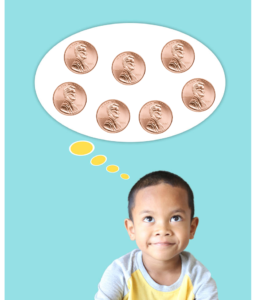
Adopt a Tree
Have your child find a tree she can adopt and care for. She can hug it, read a story under its leafy branches, or rake up its leaves. Simply watching leaves rustling in wind is very relaxing and helps a child remember and appreciate how amazing nature is. Visiting the same tree over a period of time is also a great way to notice changes.
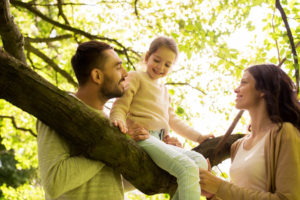
Pincer Pick-up
Have your child crumple paper strips into tiny wads. Encourage him to count how many wads he makes. Show how to use a clothespin or tweezers to pick up the wads and put them into a paper cup. After your child has picked up all of the paper wads, have him dump the wads into the recycle bin.

Nurture the Earth
Sing “We’ve Got the Whole World in Our Hands.” Caring for the earth is in everybody’s hands. This means it takes everyone working together. Have your child name one thing he will do to help, such as pick up litter, donate clothes or toys, or turn off water and lights. Click image for lyrics.
Daily Message
How can you help keep our
world clean?
- Say the sentence. Ask your child to repeat it.
- Say the word “you” slowly pausing between the two sounds (y-ou). Have your child blend the sounds to say the word.
- Write the sentence as your child says it.
- Have your child answer the question. Write the answer.
Alphabet Book
At the top of 26 same-size pages write: A is for __________ , B is for __________ , C is for __________ , and so on to Z. Make one page for each letter of the alphabet. Have your child draw an object that begins with the letter on the page. Help your child sound out and write the word to finish the sentence. Work on this project over several days. Read and reread it often.
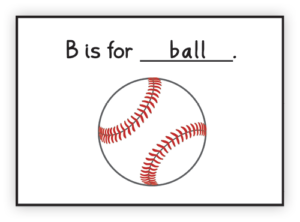
We Love Everyone
Watch the music video “We Love Everyone.” Join in with Charity Kahn’s dance. Talk with your child about how the two of you are kind, show respect, and share with everyone.
Counting Recyclables
Check the recycling box your child decorated on Day 2. Have your child count and remove each item from the box. Ask: Have we reached our goal of 20? How do you know? Help your child count how many more items still need to be collected or how many items there are over the goal.
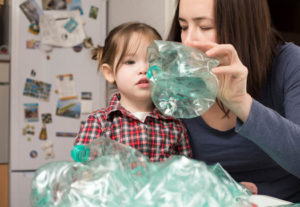
Is it Pollution?
Check on the celery experiment you set up on Day 3. Cut the celery stalk one inch from the bottom. Look at the newly exposed part of the stalk as well as the leaves at the top. Ask: What do you see? Why is the celery stalk blue? Explain that the water carried the blue color into the celery stalk: Dirty water can carry pollution into our food.
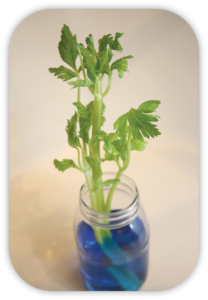
Beautiful America
The patriotic song “America the Beautiful” is also a poem. Read it to your child. Explain some of the difficult vocabulary. For example, have your child open her arms wide and reach toward the sky to represent “spacious skies.” Explain that “amber” is the color of the grain that grows in the field. It is another word for gold. Click image for poem.
Changes
Week 4: Before and Now
Explore changes that have occurred this year with your child. Has your child grown taller, learned letters and numbers, become a bike rider, practiced controlling emotions?
Word of the Week: kindergarten
Before You Begin
Watch these videos to better understand the concepts your child will be learning this week. These are not videos you will watch with your child. These are just for you!

Books to Read
- Before and Now eBook
- Before and Now Read-Aloud video
- Getting Ready for Kindergarten eBook
- Miss Bindergarten Gets Ready for Kindergarten eBook
Supplies to Gather
- baby photos of child
- backpack
- blocks
- calendar (printed or digital)
- cell phone
- cleaning toys: toys, two buckets of water, dish soap, sponge, and towel
- hard, flat surface like a clipboard
- journal
- masking tape
- packaged, non-refrigerated groceries
- paper
- paper squares (paper, stick-on notes, toilet tissue squares)
- sun experiment: colored construction paper, flat object
- writing tools
Now You Can!
Talk with your child about skills he or she has learned. For example, you might say: Before you could not ride a scooter. Now you can ride your scooter down the sidewalk. Give your child a chance to tell about skills he or she is proud of learning.
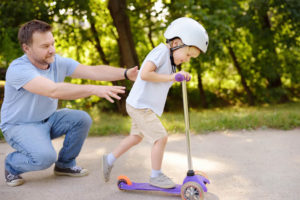
Daily Message
Pre-K begins with P. Kindergarten begins with K.
- Say the sentences. Ask your child to repeat them.
- Say kindergarten and kangaroo. Have your child repeat the words. Ask: What other word begins with the same sound?
- Write the sentences as your child says them. “Read” the sentences together as you move your hand under the words.
- Have your child circle uppercase K in the sentences.
We Love Everyone
Watch the music video “We Love Everyone” with your child. Sing and move along with Charity Kahn. Ask: What are some ways that we can show respect and kindness to everyone?
Storytime
Watch the Before and Now read-aloud video.This story is about changes children notice about themselves as they recognize how they have grown during their year in Pre-K. Ask: What changes have you noticed about yourself?
Six-Person Survey
Have your child conduct a survey of six people (friends, family members, neighbors) asking the question, “Is summer your favorite season?” Provide paper, a marker and a clipboard. Help her write a list of the names of people she will interview. Tell her to make a happy face for each “yes” response and an X for each “no”.
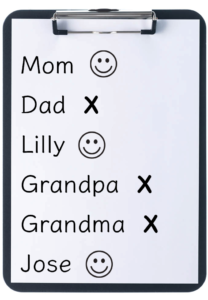
Match an Outline
Today your child will compare arrangements of six squares. Show your child a six-cube design and four outline puzzles. Challenge your child to compare the outlines and tell which outline matches the shape of the design. Give your child six stick-on notes (or paper squares) to recreate the outline. Click image to get started!
Power of the Sun
Say: The sun is closer to the earth during the summer, which means the sun’s rays are more powerful. Demonstrate the power of the sun’s light by placing a sheet of colored construction paper in direct sunlight. Place a flat object on top of the paper. Leave the paper and object in the sunlight for the entire week. Check the experiment on Day 5.

Block Numerals
Have your child use blocks to create a large numeral 5. If needed, use masking tape to outline a large numeral 5 on the floor. Have your child place blocks on the tape outline. After the construction, have your child count the number of blocks used to make the numeral.
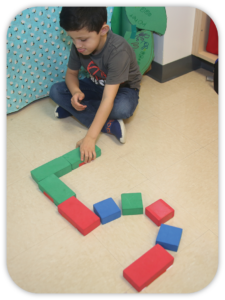
Frustration
Everyone feels the feeling of frustration at times. Your child may feel frustrated when he tries something new. Talk about strategies for dealing with frustration (S.T.A.R., taking deep breaths, walking away for a few minutes before trying again). Point out that sometimes learning new things takes time. Ask: Have you ever felt like giving up? What did you do?

Daily Message
Before begins with B. Now begins with N.
- Say the sentences. Ask your child to repeat them.
- Say now and no. Have your child repeat the words. Ask: What other word begins with the same sound?
- Write the sentences as your child says them. “Read” the sentences together as you move your hand under the words.
- Have your child circle B and b in the sentences.
Alliteration
Say three words: Adam, alligator, Jessie. Ask your child to repeat them. Ask: Which two words begin with the same sound? What animal name begins with the same letter as your name? (Annie, ant) Say more word pairs. Ask your child to think of a word that begins with the same sound.

Different Drum
Not everyone likes the same things. That is OK. That’s the idea of this song, “Different Drum.” Listen to the song with your child. Explain that “hear the beat of a different drum” means looking at something in a different way. Ask: How do you and your friends look at things in different ways? (like different sports, foods, activities) Click image for lyrics.
Storytime
Show the cover of Miss Bindergarten Gets Ready for Kindergarten. Ask: What do you notice about this group of characters? Can you predict whether this will be a true (nonfiction) or make-believe story? Say: This story may give you some ideas about what you will experience next year when you go to kindergarten?
My Body Can Do It!
Celebrate with your child a task she can now do with her body that she could not do at the beginning of the year. For example, she may be able to do a somersault. Have her show you the task. Try to do the task with your child. Ask: How did you learn to do it? (practice, class, watched others)

Growing Up
Show your child his or her baby photos. Talk about some of the things your child has learned to do since the photos were taken. Include special moments, such as saying a first word, taking first steps, or blowing out candles on a birthday cake. Ask what moments your child remembers.
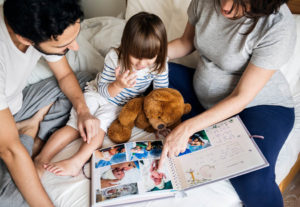
Daily Message
Four begins with F. Five begins with F.
- Say the sentences. Ask your child to repeat them.
- Say five and four. Have your child repeat the words. Ask: What other word begins with the same sound?
- Write the sentences as your child says them. “Read” the sentences together as you move your hand under the words.
- Have your child circle uppercase F in the sentences.
Writing Together
Draw a cake on paper. Write the word “cake” to label the picture. Have your child help you add more details to the writing. Ask: Whose cake is this? How many candles are on the cake? What flavor is the cake? Add to the drawing and words to make the writing more meaningful. Say: When we add details to writing, our story is more interesting.
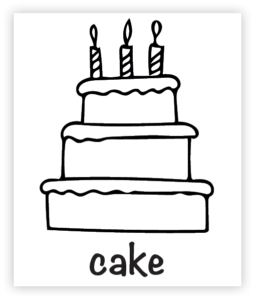
Make New Friends
Watch the music video “Make New Friends.” Sing and march along with the music. Ask: Have you made new friends this year in Pre-K? Who are some of your new friends? Who are some of your old friends?
Storytime
Show Getting Ready for Kindergarten. This is another book about a kindergarten teacher and how she prepares for the first day of school. Read the story. Have your child recall what Miss Fatimah and others do to get ready for kindergarten. Ask: What will you do to prepare for your first day?
Favorite Science
This year you and your child have read many books about science. Take time today to talk about some of these books, remember the information you learned, and think about topics you would like to read more about. Click image for a collection of the science books your child has read this year.
Cleaning Toys
Have your child sort through a collection of toys and remove those that are dirty. Do not include toys that are electric or have batteries. Prepare two buckets of water (one with dish soap and one without). Provide a sponge and towel. Invite your child to wash the dirty toys in the soapy water, rinse with fresh water and dry with the towel.
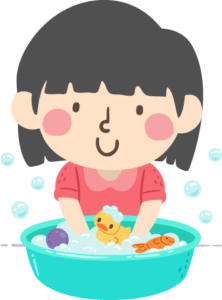
On the Playground
Go with your child to your neighborhood playground. Talk about skills she has learned while playing there. Maybe she has learned to “pump” (make herself go higher) on the swing. Give your child a chance to tell which skills she is proud of learning and to show you those skills.
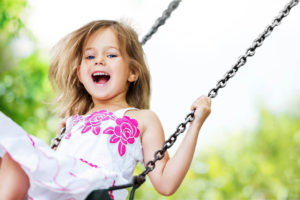
Mind Your Manners
Ask: What manners have you learned this year? Talk about why manners are important. Focus on manners that your child can practice, such as saying “please” and “thank you,” waiting for a turn, and chewing with mouth closed. Remind your child how to say “please” and “thank you” using sign language.
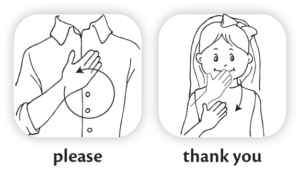
Daily Message
Manners begins with M.
- Say the sentence. Ask your child to repeat it.
- Say manners and mouse. Have your child repeat the words. Ask: What other word begins with the same sound?
- Write the sentences as your child says them. “Read” the sentences together as you move your hand under the words.
- Have your child circle uppercase M in the sentences.
My Journal
Have your child draw a picture of herself on the first blank page in her journal. Have her write her name under the drawing. Then say: What details can we add to make this more interesting? Have your child add to the drawing and write about it. Help as needed.
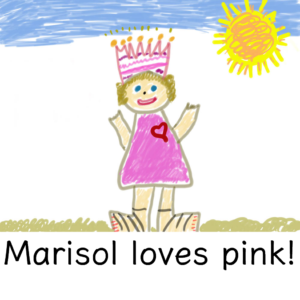
Storytime
Watch the Before and Now read-aloud video. Ask your child to use the “before and now” pattern to tell about something she could not do at the beginning of the year that she can do now: Before I could not __________ . Now I can __________ ! Write down your child’s ideas and post them on the refrigerator to celebrate!
Backpack Design
Invite your child to clean out the backpack she used for school this year. Encourage her to closely inspect how the backpack was made. Ask: How was it designed to be carried? (straps) How were the straps attached to the backpack? (stitched). How do you open the backpack? (zipper, Velcro, buckles) How does it stay closed so the things do not fall out?

Library Check-Out
Schedule a time to take your child to a neighborhood library. Tell her that she will find books there that she can check out and take home to read over the summer. Register your child for a library card. Set aside time for her to look at science nonfiction titles that cover the topics she expressed interest in when you talked about science books.
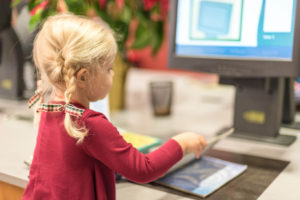
Alphabet Book
Continue to work on the Alphabet Book you started. As pages are completed, have your child help you put them in order. Have family members create a page. When the book is finished, enjoy reading it together!
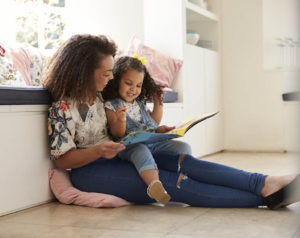
Daily Message
Please begins with P. Please sign your name.
- Say the sentences. Ask your child to repeat them.
- Say name and nose. Have your child repeat the words. Ask: What other word begins with the same sound?
- Write the sentences as your child says them. “Read” the sentences together as you move your hand under the words.
- Have your child write her name under the sentence.
Write the Room
Give your child a sheet of writing paper, some writing tools, and a clipboard or piece of cardboard. Have your child walk around a room looking for words and copy the words onto the paper. After a few minutes, have your child share the words on the paper.

Favorite Songs
Choose a few of your favorite songs and sing them together. Remember, singing songs boosts attention and memory. The rhythms, patterns and tones help children listen to and remember information. Singing together as a family is time well spent! Sing often!

Storytime
Read Getting Ready for Kindergarten. Ask your child to remember the food Colombia’s grandfather prepared for her. Have your child compare her breakfast with the one Colombia’s grandfather prepared. Click image to learn more about a pupusa.
Numerals I Know
As you put away groceries, make a pile of packaged, non-refrigerated items for your child to inspect. Invite him to look for numerals on the packages. Have your child name the numbers he knows.
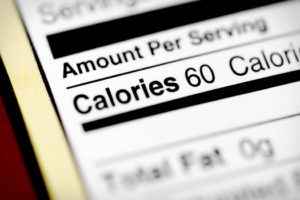
School Countdown
Show your child a printed yearly calendar or one on your cell phone. Go through the summer months and demonstrate how to count the number of days between the last day of preschool and the first day of kindergarten. Emphasize the last count word you say. Tell your child that she will learn how to count to 100 in kindergarten.
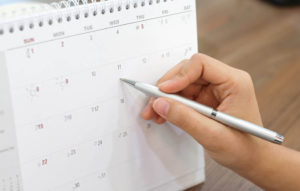
Sun Protection
Check the “Power of the Sun” experiment from Day 1. Have your child remove the object placed on top of the construction paper. Ask: Can you tell where the object was? Explain that sunlight caused the paper to fade in the places where the object was not covering it. Say: It is important to wear sunscreen and sunglasses to protect your skin and eyes from sunlight.

The Next Step
Talk with your child about kindergarten. Explain that this is the next grade of school. Point out that kindergarten is a place to learn many new things and meet new friends. Ask what questions your child has about kindergarten. Visit a classroom, if possible, and answer any questions your child might have.
